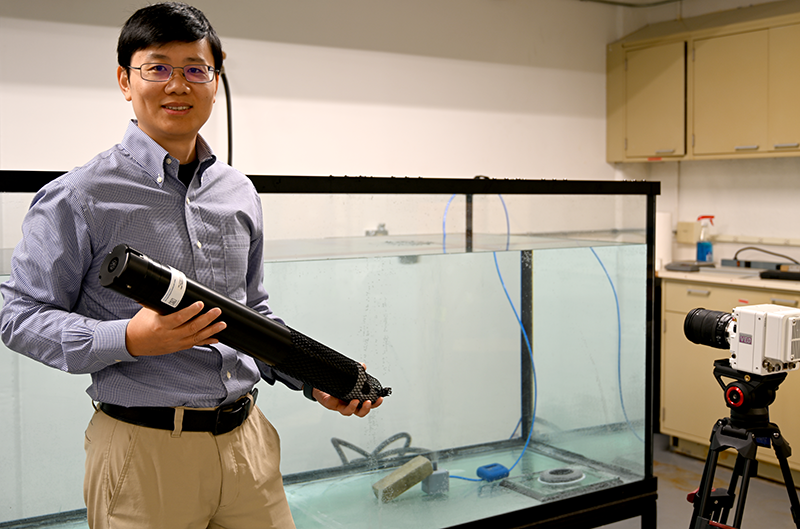September 24, 2023

A thousand feet under the ocean, plumes of gases are rising out of plant and animal fossils. These natural seeps provide necessary food and energy for marine life. In rare situations, they could also pose challenges to oceanic exploration if they are massive in volume and could be releasing methane into the environment in shallow waters.
Hundreds of miles from shore, a Mizzou Engineer is working to better understand these seeps, work that could lead to advancements in oceanic exploration, identification of aquatic life near seeps, sustainability and even new energy sources.
Binbin Wang, an assistant professor of civil and environmental engineering, is devising technologies to capture information from the bubbles of hydrocarbons rising from underwater.
“Natural seeps are important in general, as they support an ecosystem on the ocean floor,” he said. “Eventually, we want to map out what is going on in the ocean, and that’s where these new technologies will come in.”
Wang received funding from the Office of Naval Research (ONR) to characterize the bubbles and bubble-induced flows coming out of natural seeps. To do so, he’s integrating both optical and acoustic techniques using a large tank in his Environmental Fluid Dynamics Lab.
“The bubbles we’re simulating in our tank mimic what’s happening in the ocean,” he said. “These ocean bubbles typically contain methane and other hydrocarbons, and these hydrocarbons are important to energy sources for ocean life and biodiversity.”
Specifically, Wang is developing a video camera system that can be submerged underwater to record activity. An LED and a laser illuminate the seeps, then the camera captures flow behavior, measuring velocity and giving researcher a glimpse into rarely seen oceanic activity.
He’s coupling that with information collected from high-frequency sonar equipment, which are speakers that emit sound waves through water. When these waves encounter the bubbles, they reflect off of them, determining the distance and strength of bubbling.
Sonars are already used in the ocean for navigation, object detection and oceanographic research. Some special acoustic equipment is used to measure flow velocities.
“Bubbles are seen as contaminating flow measurements,” Wang said. “Instead, we’re going to take advantage of this information to characterize the bubbles.”
In addition to gaining foundational understanding around the behavior of seeps, Wang’s studies will also provide better insight into life around them, such as the types of fish and aquatic life that rely on nutrients from the seeps.
“The Office of Naval Research has a strong mission in autonomous underwater exploration, our research may play a role in mapping ocean seeps autonomously in the future,” Wang said.
Last year, Wang was selected to work with the Offshore Energy Safety track of the National Academies of Sciences’ Gulf Research Program. He has also received funding from the National Science Foundation to develop underwater imaging systems.
Learn more about civil and environmental engineering at Mizzou.